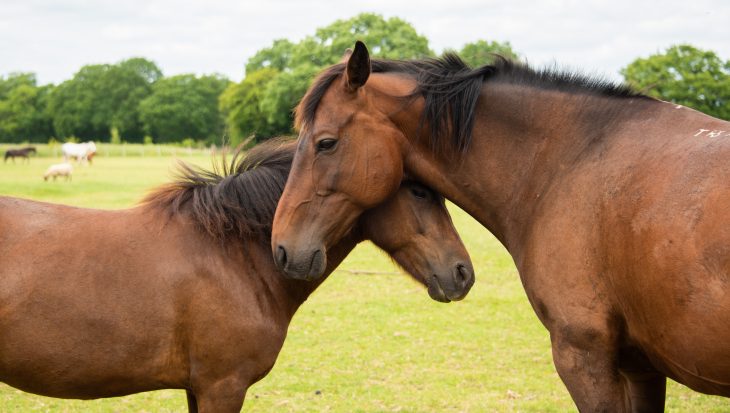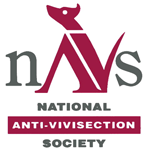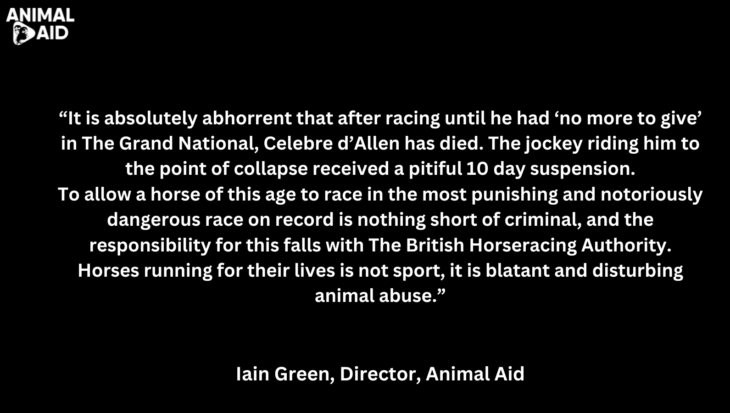An Outline Proposal for the Introduction of CCTV in Animal Research Establishments is a joint initiative of the National Anti-Vivisection Society (NAVS) and Animal Aid. The groups believe that the current Home Office inspections represent only a snapshot insight into laboratory practice, and cannot reflect day-to-day activity nor prevent serious abuse.
The proposals have been given added weight after the leading supermarkets insisted that their slaughterhouse suppliers install CCTV – a scheme backed by the Food Standards Agency. This precedent followed an Animal Aid investigation of nine slaughterhouses using fixed hidden cameras, which led to two people being convicted of cruelty for abusing pigs, including stubbing cigarettes on their faces.
Undercover investigations by the NAVS in UK laboratories over the past decade have highlighted animal abuse, lack of care, and problems that were not identified in routine Home Office inspections, including:
- Technicians laughing and joking as they smashed mice against bench tops to kill them
- Monkeys suffering prolapses due to stress after being restrained
- A cat dying after suffering for days when the animal received inadequate post-operative care (reported by the NAVS investigator)
- A laboratory losing its Home Office licence after the NAVS revealed living animals thrown into dustbin bags for disposal
- Animals torn open by hand to have their organs ‘harvested’
Animal Aid and the NAVS argue that CCTV in animal labs is a cost-effective way for the Home Office to meet its regulatory obligations, especially at a time when the department faces budgetary cuts that could reduce the number of inspections of licensed premises. CCTV cameras could also help address growing public scepticism about regulatory controls and animal protection in laboratories. A 2009 Ipsos MORI poll found that 31 per cent of people did not trust the process, while 65 per cent ‘would not be surprised’ if unlicensed experiments go on behind closed doors.
The Home Office employed 21 full-time inspectors to assess and police the 3.7 million experiments conducted during 2010. Armed with a Home Office licence, laboratory employees can undertake procedures that would otherwise render them liable to prosecution under the Animal Welfare Act 2006, including poisoning, brain damage, and the introduction of cancerous tissue and lethal pathogens.
The NAVS and Animal Aid argue that it is unlikely that negligence, or even wanton cruelty, would take place in the presence of an inspector and therefore would go undetected. CCTV cameras can help to both maintain standards of animal welfare, and prevent abuse.
The Home Office itself reports annually on serious violations of licence conditions. Examples in 2009-10 included animals being inadvertently starved to death, drowned, decapitated, suffocated, poisoned or killed by overheating. Most of these ‘infringements’ are self-reported and therefore probably represent a small proportion of the true number. Despite such infringements occurring each year, only once have legal proceedings been instituted by the Home Office. This followed national television coverage of dogs being slapped, and admissions by laboratory staff of the fraudulent generation of data.
Because of the high level of public mistrust about the regulatory process, the CCTV proposal calls for the establishment of an independent committee to monitor footage. Members would include a veterinarian, independent scientists, animal behaviour and welfare experts, and representatives from animal welfare groups. One or more full-time specialist staff would view randomly selected sequences of footage obtained from establishments on a rolling basis, and report back periodically to the committee. The Home Office itself would have access to all footage.
Says Animal Aid Director, Andrew Tyler:
‘Laboratory workers conducting animal experiments have a special dispensation to inflict the kind of suffering on animals that would ordinarily get them locked up. That places on them, and on the Home Office, which authorises the activity, a duty to take every possible step to reduce animal suffering. No lab worker is going to engage in gross unauthorised cruelty in front of an inspector. But CCTV cameras can pick up such behaviour. Better still, they can prevent it. Gross incompetence is also more difficult to conceal and cover up if cameras are watching. Cameras are now going into slaughterhouses because the public and key sectors of the food industry itself demand it. With the public also deeply sceptical about what goes on behind the locked doors of labs, the case for installing CCTV in vivisection establishments is overwhelming.’
Says NAVS Campaigns Director, Tim Phillips:
‘This proposal will not end all the terrible suffering of animals in experiments, but it represents a small, practical step. At a stroke, cameras monitoring animal research facilities could eliminate some of the gross abuses, mistreatment, poor handling, or animals being killed and experimented on in front of others. With the right independent oversight there is an opportunity here to change how animal experiments are policed in the UK and bring it more in line with public expectations and concerns. Animal laboratories are bristling with security cameras, and they have multiple checks and screening to ensure journalists or undercover investigators cannot get inside. All we are asking is that some of that security be employed to protect animals.’
It is envisaged that the research establishments themselves would pay for the installation of cameras, while costs of monitoring would fall to those who profit from the generation of animal data, namely the biomedical industry, including pharmaceutical companies. Funding would also be sought from grant-giving bodies such as the Medical Research Council and the Wellcome Trust. The first cameras would be installed in establishments identified by the Home Office as high-risk (because of past infringements or the nature of the research).
The Animal Aid/NAVS CCTV proposal is endorsed by animal protection groups Four Paws, OneKind and Animal Defenders International, and by the Lord Dowding Fund for Humane Research.
View the full Proposal
For more information or to arrange an interview:
Andrew Tyler (Animal Aid): 01732 364 546. Out of hours: 07918 083 774
Tim Phillips (NAVS): 020 7630 3340. Out of hours: 07785 552548



